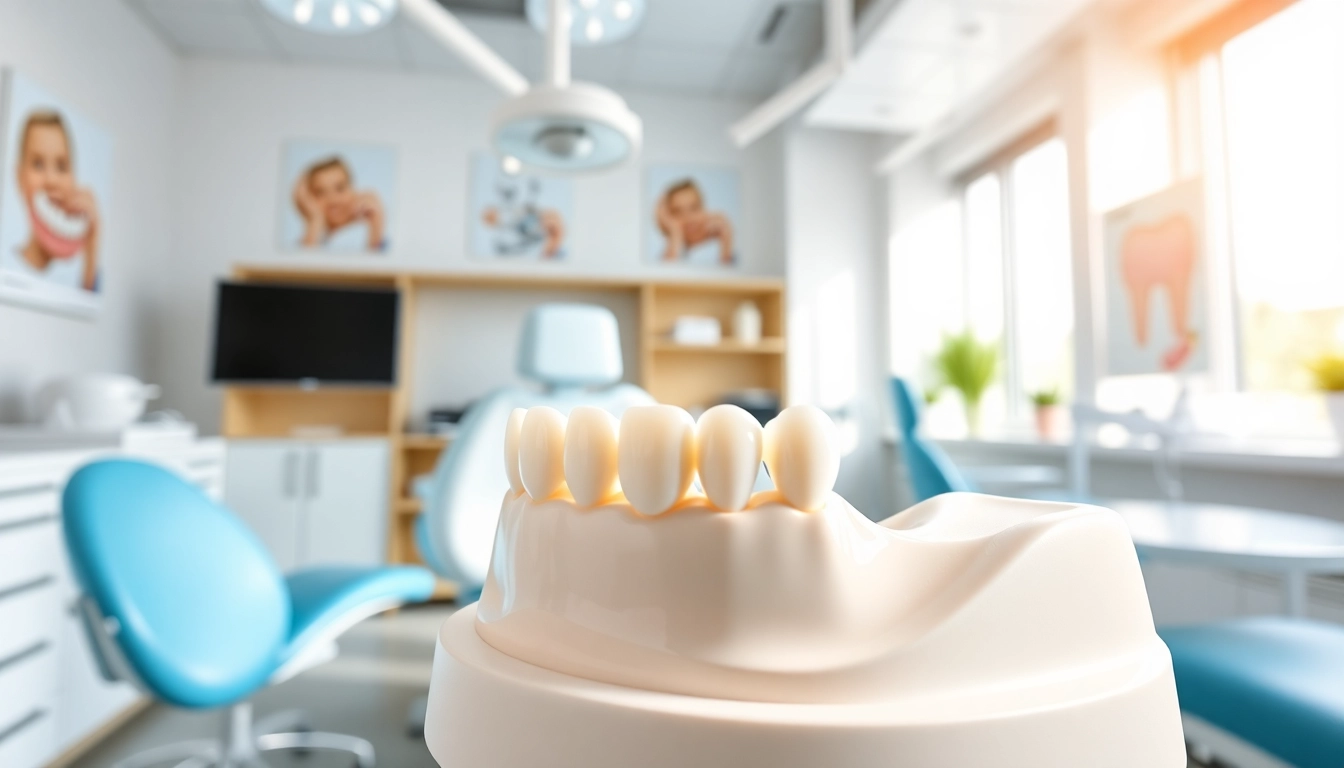What Are Dental Bridges?
Definition and Purpose of Bridges
A dental bridge is a prosthetic device used to replace one or more missing teeth by anchoring an artificial tooth (or teeth) to the adjacent natural teeth. The primary purpose of a dental bridge is to restore functionality, aesthetics, and alignment within the oral cavity. Missing teeth can lead to various complications, including difficulties with chewing, speech impediments, and a decrease in self-esteem. By using bridges, dental professionals help patients regain their smile and improve their oral health.
The need for bridges often arises when patients experience tooth loss due to decay, injury, or periodontal disease. Addressing this issue is essential not only for cosmetic reasons but also for maintaining the integrity of the dental arch and preventing the shifting of remaining teeth.
Types of Bridges Available
There are several types of dental bridges, each designed to meet specific needs and situations. The most common types include:
- Traditional Bridges: These involve the placement of crowns on the adjacent teeth (abutments) with an artificial tooth (pontic) in between. This type is the most prevalent due to its reliability and effectiveness.
- Cantilever Bridges: Used when there is only one adjacent tooth available for support. They are less common and typically applied in specific situations where traditional bridges are not feasible.
- Maryland Bridges: Constructed using a framework of porcelain or metal that attaches to the backs of adjacent teeth, making them a conservative option that doesn’t require extensive alteration of the adjacent teeth.
- Implant-Supported Bridges: Ideal for individuals who have lost several teeth. These bridges are anchored by dental implants rather than natural teeth, offering exceptional stability and longevity.
Benefits of Using Dental Bridges
Dental bridges offer numerous advantages that extend beyond mere aesthetics:
- Improved Functionality: They restore the ability to chew and speak properly, enhancing overall quality of life.
- Maintenance of Facial Structure: By filling gaps, bridges help prevent facial sagging, maintaining the natural shape of the face.
- Prevention of Teeth Movement: Bridges prevent remaining teeth from migrating into the gap, which can lead to misalignment and further dental issues.
- Durability: With proper care, dental bridges can last over a decade, making them a long-term solution for tooth loss.
How Dental Bridges Work
Procedure for Getting a Bridge
The procedure for obtaining a dental bridge typically involves several appointments. Initially, the dentist will evaluate the condition of the mouth and any existing teeth to develop a personalized treatment plan. The process generally follows these steps:
- Preparation: The adjacent teeth are prepared by reshaping them to accommodate crowns. This may involve the removal of a portion of enamel for proper fitting.
- Impressions: Once the teeth are prepared, impressions are taken to create a precise model for the bridge.
- Temporary Bridge: A temporary bridge may be placed to protect the teeth while the permanent bridge is being fabricated.
- Placement: At the follow-up appointment, the temporary bridge is removed, and the new bridge is fixed in place using dental adhesive or cement.
Materials Used in Dental Bridges
Dental bridges can be crafted from various materials, each offering unique benefits. The most commonly used materials include:
- Porcelain: This material provides a natural appearance and can be color-matched to existing teeth, making it an excellent choice for aesthetic concerns.
- Metal Alloys: These provide strength and durability; however, they are less aesthetic and may be visible if used in noticeable areas.
- Composite Resin: Although less durable than porcelain, composite resin bridges can be an affordable option for temporary solutions.
Timeframe for Treatment
The timeline for getting a dental bridge varies depending on individual circumstances and the complexity of the case. Generally, the process may take anywhere from two to three weeks, allowing sufficient time for the fabrication of the bridge and ensuring proper healing of any preparation sites.
Caring for Your Dental Bridge
Daily Maintenance Tips
Proper care of dental bridges is crucial for longevity and oral health. Here are essential maintenance tips:
- Brush your teeth at least twice a day using a soft-bristled toothbrush, focusing on both natural and artificial teeth.
- Floss daily to remove plaque and food particles around the bridge and supporting teeth.
- Use an antibacterial mouthwash to help prevent gum disease and maintain fresh breath.
- Avoid hard foods that could dislodge or damage the bridge.
Signs of Care Issues
Being vigilant about the health of your bridge is essential. Signs that may indicate issues include:
- Discomfort or pain when chewing.
- Swelling or redness in the gums surrounding the bridge.
- Visible wear or damage to the bridge.
- Changes in bite alignment.
Regular Check-ups and Adjustments
Regular dental check-ups are critical for ensuring the health of a dental bridge. During these visits, the dentist will check for any potential complications, perform necessary adjustments, and provide professional cleaning. Most dentists recommend visiting every six months or as directed, depending on individual health needs.
Common Myths About Dental Bridges
Misunderstandings and Clarifications
There are several common misconceptions regarding dental bridges. It’s important to clarify these myths:
- Myth: Dental bridges are only for aesthetic purposes.
- Fact: While they enhance appearance, their primary goal is to restore function and prevent dental issues.
- Myth: Bridges are uncomfortable.
- Fact: When properly fitted, they should provide a comfortable experience similar to natural teeth.
Comparing Bridges with Other Solutions
Dental bridges are often compared to dentures and dental implants. While each option has its benefits, bridges offer a more stable solution than dentures and require less surgery than implants. However, the best choice will ultimately depend on individual circumstances and preferences.
Patient Testimonials and Experiences
Many patients have shared positive experiences regarding their dental bridges. Common themes include improved confidence and comfort in daily activities. For instance, patients often express relief at being able to chew food without discomfort and the joy of smiling without embarrassment.
Choosing the Right Dentist for Bridges
What to Look for in a Dental Provider
Selecting the right dentist is crucial for a successful bridge procedure. Look for a provider with:
- Strong credentials and experience with restorative dentistry.
- Positive reviews and testimonials from previous patients.
- State-of-the-art technology and materials in practice.
- A responsive and supportive office staff.
Financial Considerations and Insurance Coverage
Understanding the financial implications of getting a dental bridge is essential. Check with your insurance provider to verify coverage for bridges, as many plans include partial reimbursements. Additionally, inquire about payment plans or financing options offered by the dental practice to manage costs effectively.
Questions to Ask During Your Consultation
When meeting with a potential dentist, consider asking the following questions to help gauge their expertise and fit for your needs:
- What types of dental bridges do you provide?
- Can you walk me through the procedure and what to expect?
- What materials do you recommend for my specific situation?
- How do you handle follow-ups and potential complications?



